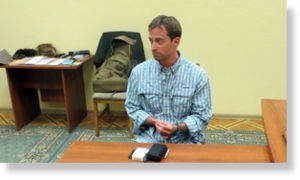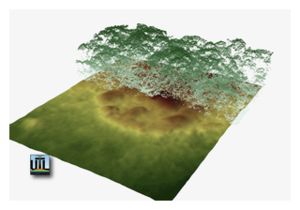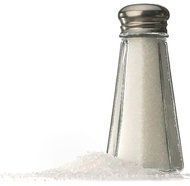|
| No new articles. |

| No new articles. |

| Puppet Masters |
|
Daniel Nisman
CSMonitor.com 2013-05-15 11:59:00
In the past half-century, earthquakes have directly contributed to the overthrow of at least two authoritarian regimes in Nicaragua and Iran. By exposing government corruption and incompetency, earthquakes wield the ability to inflict political damage to the world's most ironclad regimes with a level of potency matched only by their unpredictability. As EU foreign policy chief Catherine Ashton and Iran's chief negotiator Saeed Jalili meet in Turkey today to continue working toward an agreement on Iran's nuclear program, the Iranian leadership should heed history's warning: No nuclear program can save a regime from a toppling earthquake. In 1972, a powerful earthquake devastated Nicaragua's capital, Managua, setting off a chain reaction of public discontent that eventually led to the ousting of the notoriously corrupt Somoza dynasty. For the Nicaraguan people, President Somoza's squandering of international emergency aid following the earthquake was the last straw in a series of blatantly corrupt moves that showed little regard for their wellbeing. The second instance occurred in September 1978 in Iran, when a 7.7 magnitude earthquake killed more than 26,000 near the eastern city of Tabas. The dismal response of the equally corrupt shah pushed Iran's already bubbling popular uprising to a boiling point, one month after the CIA made its historically erroneous assessment that the country was "not in a revolutionary or even pre-revolutionary situation." As the Somozas and the shah can attest from their resting place in history's dustbin, earthquakes are much more than nature's most destructive physical force. | |
Comment: Author Daniel Nisman is the Middle East section intelligence director at Max Security Solutions, a geo-political and security risk consulting firm.
And then we have this: A Haiti Disaster Relief Scenario was envisaged by the U.S. Military one day before the earthquake The Militarization of Emergency Aid to Haiti: Is it a humanitarian operation or an invasion? | |
 |

|
Matt Taibbi
Rolling Stone 2013-05-15 11:05:00
We're going to get into this more at a later date, but there was some interesting late-breaking news yesterday. According to numerous reports, the European Commission regulators yesterdayraided the offices of oil companies in London, the Netherlands and Norway as part of an investigation into possible price-rigging in the oil markets. The targeted companies include BP, Shell and the Norweigan company Statoil. The Guardian explains that officials believe that oil companies colluded to manipulate pricing data: The commission said the alleged price collusion, which may have been going on since 2002, could have had a "huge impact" on the price of petrol at the pumps "potentially harming final consumers". The inquiry also involves Platts, the world's largest oil price reporting agency. The concept here is very similar to both the LIBOR scandal, which involved banks manipulating the benchmark rates for interest rates, and to the possible rigging of interest rate swap prices through the manipulation of ISDAfix, the benchmark rate for those instruments, which is also the subject of a regulatory probe. | |
 |

|
Carl Schreck
RIA Novosti 2013-05-14 19:11:00
The alleged espionage arsenal that a purported American spy was carrying when he was caught Monday night in Moscow - including a compass and a map of the Russian capital - looks decidedly old-school in the age of iPhones and GPS navigators. But when it comes to spy tradecraft, newer isn't necessarily better, a veteran clandestine services officer with the US Central Intelligence Agency (CIA) told RIA Novosti on Tuesday. "Just as espionage itself is very old, many of the tradecraft methods for espionage are still valid," said Peter Earnest, who operated intelligence collection and covert operations in Europe and the Middle East during a 35-year career with the CIA. "Cell phones and text messages can be hacked," Earnest added. "By resorting to written messages and dead-drop sites, you may be ensuring the intelligence service and perhaps the agent a level of security that trying to talk on the phone or something else doesn't." | |
 |


|
Jed Morey
Long Island Press 2013-05-14 18:40:00
The manhunt for the Boston Marathon bombing suspects offered the nation a window into the stunning military-style capabilities of our local law enforcement agencies. For the past 30 years, police departments throughout the United States have benefitted from the government's largesse in the form of military weaponry and training, incentives offered in the ongoing "War on Drugs." For the average citizen watching events such as the intense pursuit of the Tsarnaev brothers on television, it would be difficult to discern between fully outfitted police SWAT teams and the military. The lines blurred even further Monday as a new dynamic was introduced to the militarization of domestic law enforcement. By making a few subtle changes to a regulation in the U.S. Code titled "Defense Support of Civilian Law Enforcement Agencies" the military has quietly granted itself the ability to police the streets without obtaining prior local or state consent, upending a precedent that has been in place for more than two centuries. The most objectionable aspect of the regulatory change is the inclusion of vague language that permits military intervention in the event of "civil disturbances." According to the rule: | |
 |

| Society's Child |

| Secret History |
|
Daily Mail UK
Researchers believe they may finally have uncovered the lost 'White City of gold' in Honduras using hi-tech scanners that let aircraft 'see' through dense forest.Researchers from the University of Houston and the National Center for Airborne Laser Mapping (NCALM) flew over the Mosquitia region in a small plane shooting billions of laser pulses at the ground to create a 3D digital map of the topology beneath the jungle canopy.2013-05-15 09:08:00 Compiling their data, the analysts revealed what appears to be man-made elevation changes that are thought to show a forgotten city plaza dotted with pyramids reclaimed by the jungle.
| |
 |

| Science & Technology |
|
NASA.gov
Scientists using images from NASA's Mars Reconnaissance Orbiter (MRO) have estimated that the planet is bombarded by more than 200 small asteroids or bits of comets per year forming craters at least 12.8 feet (3.9 meters) across. Researchers have identified 248 new impact sites on parts of the Martian surface in the past decade, using images from the spacecraft to determine when the craters appeared. The 200-per-year planetwide estimate is a calculation based on the number found in a systematic survey of a portion of the planet.2013-05-15 15:46:00 MRO's High Resolution Imaging Science Experiment (HiRISE) camera took pictures of the fresh craters at sites where before-and-after images by other cameras bracketed when the impacts occurred. This combination provided a new way to make direct measurements of the impact rate on Mars. This will lead to better age estimates of recent features on Mars, some of which may have been the result of climate change.
"It's exciting to find these new craters right after they form," said Ingrid Daubar of the University of Arizona, Tucson, lead author of the paper published online this month by the journal Icarus. "It reminds you Mars is an active planet, and we can study processes that are happening today." These asteroids or comet fragments typically are no more than 3 to 6 feet (1 to 2 meters) in diameter. Space rocks too small to reach the ground on Earth cause craters on Mars because the Red Planet has a much thinner atmosphere. | |
 |

|
Tariq Malik
An overachieving sunspot on the surface of the sun unleashed its fourth major solar flare in two days late Tuesday (May 14), a solar storm that may deal Earth a glancing blow, space weather experts say. The active sunspot AR1748 roared to life Tuesday night releasing an X-class solar flare - the strongest type the sun can experience - that peaked at 9:48 p.m. EDT (0148 May 15 GMT), according to NOAA's Space Weather Prediction Center in Boulder, Colo. The flare came after a relative lull in activity from sunspot AR1748, which fired off three monster X-class solar flares within a 24-hour period between Sunday and Monday.SPACE.com 2013-05-15 15:29:00 In a morning update, NOAA space weather officials said they are studying this latest solar flare from AR1748 to see if it coincided with an eruption of super-hot solar plasma known as a coronal mass ejection, or CME. Such explosions can unleash huge waves of charged solar material streaking out into space at millions of miles per hour. |
 |

|
Stephanie Pappas
LiveScience 2013-05-15 07:51:00
New images of a possible lost city hidden by Honduran rain forests show what might be the building foundations and mounds of Ciudad Blanca, a never-confirmed legendary metropolis. Archaeologists and filmmakers Steven Elkins and Bill Benenson announced last year that they had discovered possible ruins in Honduras' Mosquitia region using lidar, or light detection and ranging. Essentially, slow-flying planes send constant laser pulses groundward as they pass over the rain forest, imaging the topography below the thick forest canopy. What the archaeologists found - and what the new images reveal - are features that could be ancient ruins, including canals, roads, building foundations and terraced agricultural land. The University of Houston archaeologists who led the expedition will reveal their new images and discuss them today (May 15) at the American Geophysical Union Meeting of the Americas in Cancun. | |
 |

|
Jenny Hogan
Centre for Quantum Technologies at the National University of Singapore 2013-05-14 19:17:00
Like small children, scientists are always asking the question 'why?'. One question they've yet to answer is why nature picked quantum physics, in all its weird glory, as a sensible way to behave. Researchers Corsin Pfister and Stephanie Wehner at the Centre for Quantum Technologies at the National University of Singapore tackle this perennial question in a paper published 14 May in Nature Communications. We know that things that follow quantum rules, such as atoms, electrons or the photons that make up light, are full of surprises. They can exist in more than one place at once, for instance, or exist in a shared state where the properties of two particles show what Einstein called "spooky action at a distance", no matter what their physical separation. Because such things have been confirmed in experiments, researchers are confident the theory is right. But it would still be easier to swallow if it could be shown that quantum physics itself sprang from intuitive underlying principles. One way to approach this problem is to imagine all the theories one could possibly come up with to describe nature, and then work out what principles help to single out quantum physics. A good start is to assume that information follows Einstein's special relativity and cannot travel faster than light. However, this alone isn't enough to define quantum physics as the only way nature might behave. Corsin and Stephanie think they have come across a new useful principle. "We have found a principle that is very good at ruling out other theories," says Corsin. | |
 |

| Earth Changes |
|
Daily Mail UK
Scientists say small lava flows have been detected on two restless volcanoes in Alaska. The Alaska Volcano Observatory says satellite images on Tuesday show the lava partly down a flank of Pavlof Volcano in a low-level eruption, 625 miles southwest of Anchorage.2013-05-15 15:28:00 Geophysicist Dave Schneider says minor steam and ash emissions are visible from the community of Cold Bay 37 miles away. Pavlof is the second Alaska volcano to erupt this month. Cleveland Volcano, on an uninhabited island in the Aleutian Islands, experienced a low-level eruption in early May.
| |
 |

|
The Extinction Protocol
U.S. Forest Service Geologist Jim Baichtal, who is based on Prince of Wales Island, and Anchorage geologist Sue Karl were looking at some hydrographic surveys, something geologists tend to do. When we were done, I noticed the area from Thorne Arm to Rudyerd had been surveyed," Baichtal said. "I zoomed in and there was this large... some kind of volcano, and two other dome-like structures." Karl added that, "This new NOAA survey allowed us to see things that people had never seen before." Karl said a modern example of a similar eruption is Surtsey, a volcanic island in Iceland, which erupted from the sea floor in the 1960s, building itself up and eventually breaching the surface to form the island. Karl points out that when the newly discovered volcano erupted, sea levels also were lower than they are now, but even with that, "We still have too much depth. We have to call on glacial loading and rebound."2013-05-15 12:28:00
| |
 |

|
The Extinction Protocol
It's beginning to look a lot like Christmas - so it's rather odd that we find ourselves in mid-May. Snow fell across parts of Britain last night while another area had a month's rain in just 24 hours as winds of up to 65mph battered the country's coastlines in unusual weather for the month. Up to 3in of snow fell in Princetown in Dartmoor, Devon, Rhayader in Powys, and Newcastle-on-Clun in Shropshire - while Pembrey, Carmarthenshire, had 3in of rain in the 24 hours until 7am today.2013-05-15 12:24:00
Local woman Sheila Coates told BBC Radio Devon: 'It's crazy. Last night I couldn't see out of my front window for the snow. I've lived here all my life, and I've never known weather like it at this time of year.' Up to 3in of snow also fell on high ground in the rural county of Shropshire last night - sparking fears of flooding in the rest of the region, as two local rivers were given flood warnings. Mike Steedman, owner of the Anchor Inn in the hills above Newcastle-on-Clun, near the Welsh border, said. 'It started at about 11pm and it came in wet and heavy. | |
 |

|
The Extinction Protocol
A flurry of earthquakes continues across the planet over the past 72 hours, showing few signs of abatement. Seismic tension continues to build across the Pacific Plate, the Cocos plate (Central America), and the Nazca plate, near South America. Tectonic plate agitation appears to be increasing, along with volcanic pressures under many of the world's major volcanoes.2013-05-15 12:20:00
| |
 |

|
mail.com
2013-05-14 11:17:00
Two bald eagles locked together by their talons in a midair battle survived a crash landing onto a runway at a northeastern Minnesota airport. Minnesota Department of Natural Resources conservation officer Randy Hanzal says the adult eagles couldn't separate Sunday before slamming into the tarmac at the Duluth International Airport. Hanzal tried to take the birds to a Duluth wildlife rehabilitation center. He covered them with blankets and jackets on the back of his pickup and held them down with webbing straps. En route, Hanzal says, he heard a ruckus and saw one bird jump out and fly away. The Duluth News Tribune says the other eagle made it to the rehab center and is now being cared for by the University of Minnesota in St. Paul's Raptor Center. | |
 |

|
Terra Daily / SPX
Earthquakes similar in magnitude to the 2004 Sumatra earthquake could occur in an area beneath the Arabian Sea at the Makran subduction zone, according to recent research published in Geophysical Research Letters. The research was carried out by scientists from the University of Southampton based at the National Oceanography Centre Southampton (NOCS), and the Pacific Geoscience Centre, Natural Resources Canada.2013-05-15 09:17:00 The study suggests that the risk from undersea earthquakes and associated tsunami in this area of the Western Indian Ocean - which could threaten the coastlines of Pakistan, Iran, Oman, India and potentially further afield - has been previously underestimated. The results highlight the need for further investigation of pre-historic earthquakes and should be fed into hazard assessment and planning for the region.
| |
 |

| Fire in the Sky |
| No new articles. |

| Health & Wellness |
|
Anthony Gucciardi
Natural Society 2013-05-15 03:00:00
Actress Angelina Jolie is the latest to surgically remove her breasts and partake in a concerning new trend that encourages healthy women to remove their body parts in order to 'prevent cancer'. I've talked about this trend in the past, with cancer-free Sharon Osbourne and even a Miss America contender deciding to remove their breasts because they carry a mutation of the BRCA1 gene. In fact, some doctors have gone much farther than just encouraging breast removal for those with 'at risk' genes. As I discussed back in 2012, some doctors are now making blanket recommendations to remove your limbs in order to 'prevent' cancer. Paying no mind to nutrition or lifestyle, these doctors (who medical professionals I speak to all believe are truly off their rocker) are advocating self-mutilation in the highest degree and advocating it as something courageous. The simple reality is that we know we can alter our health through nutritional and lifestyle changes that directly impact the development of cancer and our overall immunity. | |
 |

|
Sayer Ji
GreenMedInfo 2013-05-15 12:45:00
The 'prophylactic' removal of women's breasts due to BRCA1/BRCA2 status has become a disturbingly popular trend, and increasingly it is being celebrated in the mainstream media and medical establishments as a reasonable choice. But does the scientific evidence itself refute this approach? Angelina Jolie's recent announcement in a New York Times op-ed that she had a 'prophylactic' double mastectomy due to her BRCA1/BRCA2 status has disturbing implications, some of which we covered late last year in connection with Allyn Rose, the 24-year old Miss America contestant who announced she would be undergoing a double mastectomy to "prevent" breast cancer. Beyond the fact that as high-profile celebrities their decisions will affect millions of women's perception of the procedure, likely making them more accepting of the concept, their decisions also reflect profound misconceptions about gene-mediated disease risk embedded deeply within popular consciousness, from which prevailing medical opinion is hardly immune. First, there is a common misconception about the role that the so-called breast cancer susceptibility genes, BRCA1 and BRCA2, play in breast cancer disease risk and prognosis. BRCA mutations vary widely by ethnicity and are exceedingly rare in the general population, which is why, as NBCNews.com recently reported, "The U.S. Preventive Services Task Force recommends that only women with a strong family history even think about getting a BRCA genetic test - which is only 2 percent of U.S. women." But even in those in which a BRCA mutation is identified, the genes, in and of themselves, do not alone make the disease. | |
 |

|
Gina Kolata
New York Times 2013-05-14 10:21:00
In a report that undercuts years of public health warnings, a prestigious group convened by the government says there is no good reason based on health outcomes for many Americans to drive their sodium consumption down to the very low levels recommended in national dietary guidelines. Those levels, 1,500 milligrams of sodium a day, or a little more than half a teaspoon of salt, were supposed to prevent heart attacks and strokes in people at risk, including anyone older than 50, blacks and people with high blood pressure, diabetes or chronic kidney disease - groups that make up more than half of the American population. Some influential organizations, including the American Heart Association, have said that everyone, not just those at risk, should aim for that very low sodium level. The heart association reaffirmed that position in an interview with its spokesman on Monday, even in light of the new report. But the new expert committee, commissioned by the Institute of Medicine at the behest of the Centers for Disease Control and Prevention, said there was no rationale for anyone to aim for sodium levels below 2,300 milligrams a day. The group examined new evidence that had emerged since the last such report was issued, in 2005. | |
 |

|
Kris Gunnars
Authority Nutrition 2013-05-13 09:14:00
The human brain is the most complex object in the universe. It is also the organ that consumes by far the most energy, compared to its weight. The brain is only about 2% of our body weight, but uses 20% of the energy. This remarkable organ has evolved over millions of years. During this time, humans were omnivores. We ate both meat and plants. There are many nutrients in these foods that are absolutely critical for the proper function of this very delicate system. Unless proper care is taken to supplement, going vegan and eschewing animal foods may lead to a deficiency in some of these important substances. Here are 5 nutrients that are very important for the brain and only found in animal foods. | |
Comment: For more information see
| |
 |

|
Suz
The Paleo Network 2013-05-12 08:27:00
No matter what type of food we eat, we can't avoid lectins as they are in absolutely everything we consume on a daily basis. Lectins are proteins which are found in animals, plants and our very own bodies and they have a number of functions which offer a means of protection to us. They can help to control the protein levels in humans but are also protective for plants as well. It is also thought that the right lectins can also be beneficial in acting as a defense mechanism against serious illnesses, such as cancer. Lectins can be useful for the body, but they can also be damaging, depending on the type of lectin. There are many different types of lectins found in different foods, so it is important to ensure we are taking in the right ones which offer the best benefits to our bodies. The function of lectins also depend a lot of the individual and how sensitive their digestive system is as to how they will react to specific types of lectins. The foods which contain particularly harmful lectins include grains and legumes, which is why they are forbidden on the Paleo diet.These foods have the potential to destroy all of the good nutrients and vitamins in your body which makes you more susceptible to suffering from serious illnesses, such as heart disease and obesity. If you consume the wrong lectins and your body rejects these, it will also start rejecting all the good foods you eat, which means they will be of no benefit to you whatsoever. In order for the body to function effectively, it is essential that we absorb the right minerals and nutrients, which is why it is important to avoid legumes and grains on the Paleo diet. There are plenty of foods which contain lectins which are good for our body and act as a way of protecting it, so it is important to be aware of the right foods to eat in order to get the most out of our bodies and feel as healthy as we can. | |
Comment: For more information on this topic see:
| |
 |

| Science of the Spirit |
| No new articles. |

| High Strangeness |
|
Ralph Blumenthal
Vanity Fair 2013-05-10 15:20:00
If you're abducted by alien beings, are you physically absent? This happens to be an important issue for the media-shy people gathered one afternoon last July on the porch of Anne Ramsey Cuvelier's blue Victorian inn on Narragansett Bay, in Rhode Island, once called "the most elegantly finished house ever built in Newport." Co-designed in 1869 by a cousin of Ralph Waldo Emerson's, it has been in Cuvelier's family since 1895, when her great-grandfather bought it as a summer getaway from his winter home blocks away, just as the Gilded Age cottages of the Vanderbilts and Astors began springing up across the island, redefining palatial extravagance. Still imposing with its butternut woodwork, ebony trimmings, and four-story paneled atrium frescoed in the Pompeian style, the harborside mansion turned B&B seemed a fittingly baroque setting for the group of reluctant guests Cuvelier describes as "not a club anyone wants to belong to." She had gathered them to compare experiences as, well, "experiencers," a term they prefer to "abductees," and to socialize free of stigma among peers. Cuvelier, an elegant and garrulous woman in her 70s, isn't one of them. But she remembers as a teen in the 1940s hearing her father, Rear Admiral Donald James Ramsey, a World War II hero, muttering about strange flying craft that hovered and streaked off at unimaginable speed, and she's been an avid ufologist ever since. "I want to get information out so these people don't have to suffer," she says. "Nobody believes you. You go through these frightening experiences, and then you go through the ridicule." So, for a week each summer for almost two decades, she's been turning away paying guests at her family's Sanford-Covell Villa Marina, on the cobblestoned waterfront in Newport, to host these intimate gatherings of seemingly ordinary folk with extraordinary stories, along with the occasional sympathetic medical professional and scientist and other brave or foolhardy souls not afraid to be labeled nuts for indulging a fascination with the mystery. I had been invited as a journalist with a special interest who has been talking to some of them for several years. Perched on a wicker settee was Linda Cortile, a mythic figure in the canons of abduction literature, whom I'd come to know by her real name, Linda Napolitano. A stylish young grandmother in a green T-shirt, black shorts, and a charcoal baseball cap, she had agreed to meet me months before at Manhattan's South Street Seaport to point at her 12th-floor window overlooking the Brooklyn Bridge, where, she says, one night in 1989 three small beings levitated her "like an angel" into a hovering craft in view of horrified witnesses, including, it was said, a mysterious world figure who might have been abducted with her. "If I was hallucinating," she told me, "then the witnesses saw my hallucination. That sounds crazier than the whole abduction phenomenon." | |
 |

| Don't Panic! Lighten Up! |
|
Ben Bromley
Baraboo News Republic 2013-05-10 13:39:00
A neighbor called police complaining Debbie Alsip was jamming out to loud music, but it turned out to be the neighborhood frogs who were getting down. Twice this month a neighbor has called Baraboo police to complain about loud music coming from the backyard of Debbie and Jeff Alsip's Rivercrest Drive home. The responding officer found the culprits weren't the Alsips, but frogs sounding mating calls at full throat. Among amorous amphibians, the Alsips' koi pond is Baraboo's answer to Studio 54. "Every spring, this happens," Debbie Alsip said. "It has woke (sic) us up before, if we have our windows open." Alsip said the frogs emit a loud, shrill sound as they seek out mates. When officer Mike Pichler arrived Sunday, he found about a dozen frogs at the pond.He saw a couple of them develop large bulges in their throats as they croaked to one another, and spotted one pair of horny toads mating. "You don't see that many frogs at one time unless they're mating," Alsip said. |
























